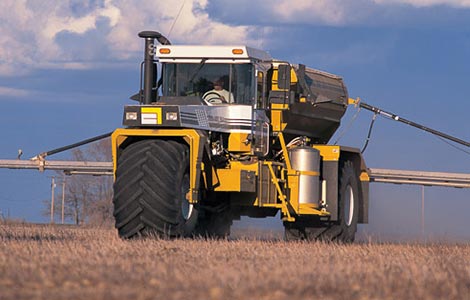
- Visual symptoms of boron deficiency may not occur until the deficiency has become moderate or severe.
- At this stage, slower growth may have reduced the yield potential for the crop.
- Use the results of soil tests and/or plant analyses to help assess the potential for boron deficiencies to ensure adequate boron supplies for the crop.
Seeing is believing. This adage applies to a lot of things, including deficiencies of plant nutrients such as boron (B). Once we can see actual symptoms of B deficiency on a crop, it is time to apply fertilizer. Right? After all, this approach eliminates the possibility of applying B where it might not be needed. Wrong! Once visible symptoms appear, it may be too late to obtain optimum yields because at least some crop yield and quality may already have been lost.
In the case of a mild deficiency, some crops may never show a symptom that is diagnostic. Boron deficiency causes a disruption in some essential metabolic processes within the plant which causes growth to slow and to eventually cease in severe cases. The results are less yield, harvesting difficulties and lower quality of the harvested product. And this can all occur without the appearance of diagnostic symptoms.
Another problem is that not all crops produce clear cut B-deficiency symptoms. One crop may do so and another not. Then there is the possibility of multiple deficiencies. Symptoms of the most severe deficiency will likely be manifested. Once that deficiency is corrected through fertilization, the secondary one will manifest itself. Meanwhile the crop is losing yield potential.
Boron deficiencies can be corrected during the growing season with Solubor® sprays.
Absorption of B from Solubor foliar sprays occurs soon after application. Growth will resume at a maximum rate under optimum conditions. But the plant may have lost some yield potential that will not be regained. This is especially true in weather-limited growing seasons.
What should be done? Correct potential B deficiencies before they occur. Use your management experience, field history, and very importantly, routine soil and tissue testing to give you the predictive information to prevent B deficiencies in the first place, and to optimize growth for maximum profits.
Adapted from: PPI Agri-Briefs, Fall 1997, No. 2